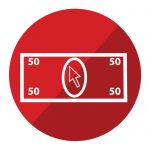
The Best KPIs for your Ecommerce Report
With access to so much information, extracting the right data is crucial- quite often choosing your ecommerce KPIs (Key Performance Indicators) is an overwhelming task- you can easily drown in stats and numbers.
Best practices suggest starting with your company objectives or goals and work from there. One of your goals may be to “increase overall traffic by 25% over the next 6 months”. The KPIs you would monitor may include traffic, bounce rate and traffic sources.
In this post we will outline 10 of the most important KPIs every e-commerce manager should include in their reporting, regardless of the nature of the business.
1. Traffic
Monitoring the traffic to your website is one of the most important KPI to measure as it will allow you to examine dips or spikes in website visits. Website traffic should be monitored on a daily, weekly and monthly basis
TIP: Set a goal for the average number of visitors you want to reach per week. Then develop a marketing strategy in order to achieve this goal. If you don’t have any past data of your own, try using industry benchmarks until you build up your own stats.
2. Average Order Value (AOV)
AOV is another key metric to measure- the higher the AOV the more income your business receives.
Average Order Value = (revenue generated) / (number of orders)
For example, if you have 50 orders totalling £1,800, your AOV is £36.
TIP: Encourage a higher AOV by offering a free delivery threshold e.g. when you spend over £50. Cross selling is another method used to boost AOV, commonly used by fashion retailers. Take ASOS for example; on a page showing a dress, customers are encouraged to also purchase the shoes and accessories pictured.
3. Conversion rate
Conversion rate is the percentage of visitors who make a purchase i.e. convert to a sale. Monitoring conversion rate will help with improving elements of your website; Are you call-to-actions working? Is your pricing competitive?
Conversion Rate = (number of sales) / (number of visits)
For example, if your store has 5000 visits and 250 of those visits leads to a sale, you have a 5% conversion rate.
TIP: According to the Nielsen Norman Group, the average e-commerce conversion rate is 3% (2014). Usually a decent rate is anywhere from 1–10%.
4. Cart Abandonment
Cart Abandonment is the percentage of users who add items to their basket and don’t go onto a make a purchase.
Cart Abandonment = (number of users who don’t complete checkout) / (number of users who start checkout)
For example, if 500 users add items to their basket, but only 150 purchase then the cart abandonment rate is 70%.
Here are the workings: (500 – 150) / 500 = 70%
A high abandonment rate can highlight issues with your checkout process i.e. the registration process is too long, lack of security badges and trust seals. In Google Analytics you can see exactly which point in the checkout process you lose customers, allowing you to investigate further.
TIP: Average shopping cart abandonment rate is 68% (Baymard Institute).
5. Cost Per Acquisition
Cost Per Acquisition (CPA) is a fundamental KPI as it shows you how much you need to spend to acquire a customer, i.e. your return on investment. It will help you determine whether a campaign is a success or a drain on resources.
Cost Per Acquisition = (total marketing costs) / (number of conversions)
TIP: Reduce your CPA by stopping unprofitable campaigns that only produce clicks with no sales. Ensure there is no e-commerce tracking issues and use buyer profiles to better target your campaigns so they are reaching the right people.
6. Bounce Rate
Bounce Rate is the percentage of visitors who leave your site immediately after landing on a page without interacting.
Bounce Rate = (number of visitors who leave immediately) / (total number of visitors)
A high bounce rate can help identify problems within your site. For example, if there are design or usability issues. Alternatively, users might also leave the site after viewing a single page if they've found all the information they need. Another simple explanation could be that a product they want to buy is out of stock.
TIP: If your landing page bounce rate is high (80%+) you need to investigate.
7. Traffic Sources & Revenue
Where is your audience coming from? Google, Facebook, email? Which channels drive the most revenue? This data will help identify which channels are working best and those that aren’t so you know exactly which channels to focus your marketing efforts on.
8. New vs Returning Customers
Analyse the number of new customers compared to the number of returning customers.
It’s five times cheaper to retain a customer that acquiring a new one, so it makes sense to have a customer retention plan in place. This KPI will help identify whether your efforts are working or not. It may also help with evaluating customer service and how well you maintain customer relationships.
9. Net Profit
Net profit is essentially your bottom line; it’s the actual profit your business makes after expenses.
Net Profit = (total revenue) – (total expenses)
TIP: Net profit can be increased in two ways; by increasing revenue or reducing costs. Revenue can be increased by attracting more customers or increasing prices. Costs can be reduced by making fewer purchases or improving production efficiencies.
10. Average Page Views & Time on Site
Average page views and time on site will highlight how good your content is at engaging visitors and if you are attracting the right traffic. If these KPIs report low figures, the problem may lie within your focus keywords i.e you are driving unqualified traffic. Another potential issue could be your site speed; Online shoppers are impatient and if your site is slow this could be driving users away.
TIP: You can test your site speed with Google’s free PageSpeed Insights tool; it allows you to measure the speed of your site by giving a specific breakdown of each area, and tips on how to improve.
KPIs should be monitored on a regular basis- monthly, weekly or even daily! We’ve highlighted the most common ones for an e-commerce site, but remember- this is not an exhaustive list; all you have to do is take a look at Google Analytics to see the infinite data available.
The KPIs you choose will ultimately depend on your industry, nature of business and goals. When building your report, always have your goals and objectives in mind- don’t waste time reporting figures that have no relevance.










